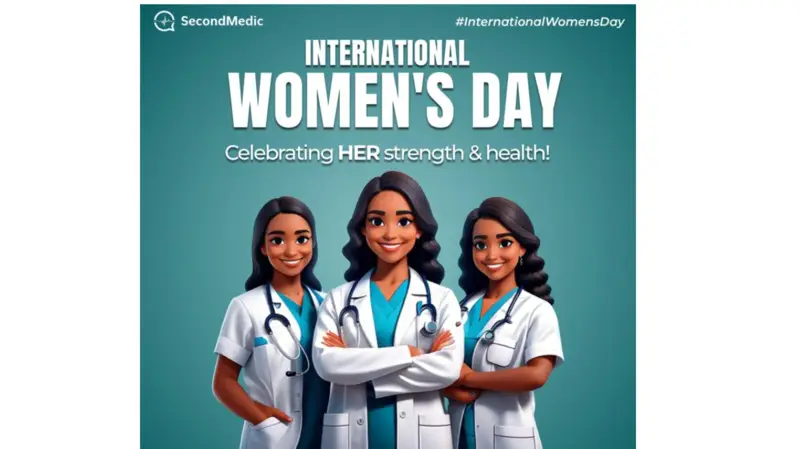- Published on: Oct 14, 2024
- 2 minute read
- By: SecondMedic Expert
10 Early Signs Of A Heart Attack In Women You Should Never Ignore
Heart disease is the leading cause of death among women, yet many remain unaware of the unique symptoms of heart attack in women. Unlike men, who may experience classic symptoms like chest pain, women often present with more subtle or atypical signs. Recognizing these early signs of a heart attack in women is crucial for timely intervention and can be lifesaving. This blog aims to illuminate the key female heart attack warning signs you should never ignore.
1. Unexplained Fatigue
Feeling unusually fatigued for an extended period is a common yet often overlooked symptom of a heart attack in women. Unlike regular tiredness, this fatigue may persist even after a full night’s sleep and can be debilitating. If you find yourself feeling drained without any apparent reason, it's important to discuss this with your healthcare provider.
2. Chest Discomfort
While chest pain is often associated with heart attacks, women might experience chest discomfort differently. It may manifest as a feeling of pressure, squeezing, or fullness rather than sharp pain. This discomfort can come and go and may be mistaken for anxiety or indigestion. Always take any chest discomfort seriously, especially if it’s accompanied by other symptoms.
3. Shortness of Breath
Women may experience shortness of breath during everyday activities or even at rest. This symptom can occur alongside chest discomfort or by itself. If you suddenly find it challenging to catch your breath, particularly if this is new for you, seek medical attention immediately.
4. Pain in Other Areas
Unlike men, women may experience heart attack pain in various areas beyond the chest. This can include discomfort in the arms, back, neck, jaw, or stomach. If you have persistent pain in these regions, especially when combined with other signs of heart attack in women, it's essential to get checked out.
5. Nausea or Lightheadedness
Feelings of nausea or lightheadedness can also signal a heart attack in women. These symptoms can be easily dismissed as gastrointestinal issues or anxiety, but if they persist or worsen, they should not be ignored. It’s always better to be cautious and seek medical help.
6. Cold Sweat
Experiencing sudden cold sweats without any obvious cause can be alarming. Women may break out in a cold sweat that feels clammy or sweaty despite not being in a hot environment. This symptom, often paired with others, can indicate a serious issue and warrants immediate medical attention.
7. Heart Palpitations
Feeling like your heart is racing or skipping beats can be unsettling. Many women report palpitations during a heart attack, which may feel like fluttering in the chest. If you frequently experience palpitations, particularly alongside other symptoms, consult your healthcare provider.
8. Sleep Disturbances
Changes in sleep patterns, including insomnia or restless nights, can be an early warning sign of heart trouble. Women might notice significant changes in their sleep leading up to a heart attack. If you're having persistent sleep issues and notice other symptoms, it's crucial to seek professional advice.
9. Anxiety or Sense of Doom
Many women report experiencing a sudden feeling of anxiety or a sense of impending doom before a heart attack. This emotional symptom can often be overlooked or attributed to stress. If you experience these feelings, especially with other symptoms, take them seriously.
10. Indigestion or Heartburn
Though less recognized, indigestion or heartburn can signal a heart issue, particularly in women. If you experience these symptoms frequently and they worsen or are accompanied by other signs, it’s essential to consult with your doctor.
Understanding the Importance of Awareness
Being aware of the heart attack symptoms in women is vital for effective treatment and prevention. Women often present with different symptoms than men, making it critical for both patients and healthcare providers to recognize the full range of potential signs.
What to Do If You Notice Symptoms
If you or someone you know exhibits these female heart attack warning signs, it's imperative to act quickly. Call emergency services or get to the nearest hospital. Time is of the essence when it comes to heart attack treatment.
Conclusion
In summary, recognizing the early signs of a heart attack in women is crucial for timely intervention. Women often experience symptoms differently from men, and understanding these differences can save lives. If you notice any of the signs mentioned in this blog, don’t hesitate to seek medical attention.
Take charge of your heart health today! Schedule a lab test with Secondmedic Consultants to assess your cardiovascular health.
Read FAQs
A. Common symptoms include unexplained fatigue, chest discomfort, shortness of breath, pain in the back or jaw, and nausea. These symptoms can differ from those typically seen in men.
A. Early signs may include unusual fatigue, anxiety, indigestion, and unexplained pain in areas like the arms or neck. It's important to take any new or persistent symptoms seriously.
A. Warning signs can include chest pressure rather than pain, lightheadedness, cold sweats, and heart palpitations. Women may experience these signs differently than men.
A. Yes, women often experience different and more subtle symptoms compared to men. While men may have classic symptoms like severe chest pain, women may report fatigue and discomfort in various areas.
A. If you experience any combination of warning signs, especially chest discomfort, shortness of breath, or sudden fatigue, seek immediate medical attention. Prompt action can save lives.










